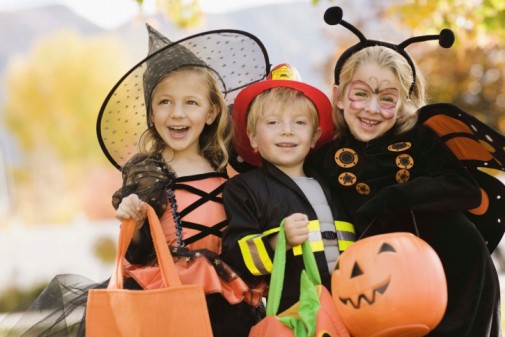Trick-or-treating with food allergies

For many kids Halloween is about finding the largest bucket or pillowcase to go trick-or-treating until it is overflowing and eating as much candy as possible. However, for kids with food allergies, this can be a dangerous scenario. While they can enjoy treat-or-treating, they must be careful about which treats they can eat without having an allergic reaction.
Approximately one in 13 kids have food allergies and many of the most common allergens like wheat, dairy, eggs, nuts, peanuts, soy are found in candy. This means that these children must be vigilant before they rip open a candy wrapper.
“Always read the ingredient labels. Fun size or treat size candy may have different ingredients than the regular size candy,” says Dr. Paola Portela, a pediatrician at Advocate Good Samaritan Hospital in Downers Grove, Ill.
There are many online resources which can help parents and kids determine what candy is safe for them to eat. The Celiac Disease Foundation has developed a list of gluten-free candy. In addition, companies including Mars, Inc., The Willy Wonka Candy Company and Ferrara Candy Company offer phone hotlines to answer food allergy questions. By doing a little homework in advance, kids will be able to know what candy they cannot eat before they head out trick-or-treating.
Depending on a child’s specific allergies, some may receive lots of candy that they cannot eat. In this case, Dr. Portela recommends that parents bring a snack for their child or bring some “safe” candy that can be swapped out for the candy they receive while trick-or-treating. This way they will be able to enjoy a treat when their friends are too. In case a child mistakenly eats a candy that contains an allergen it is always a good idea for the child to carry their emergency medicine such as an epi-pen or inhaler.
This year, the Teal Pumpkin Project is encouraging people to place a teal pumpkin on their porch as a sign that they will be passing out allergen-free candy and/or nonfood items such as Halloween stickers, temporary tattoos and tooth brushes.
According to a survey taken by kidshealth.org, most kids get at least 50 pieces of candy and over 44 percent get more than 100 pieces.
Since no child should consume that much candy in one day, Dr. Portela recommends that parents take a few steps to monitor how much candy their kids are eating:
- Have a trading system where kids can trade a specific amount of candy for something like a new toy or staying up 30 minutes later.
- Take charge of the Halloween candy. Do not let kids keep it in their rooms.
- Keep the candy in a place that the kids cannot easily get to it and only give it to them for a certain amount of time.
Related Posts
Comments
About the Author
health enews staff is a group of experienced writers from our Advocate Health Care and Aurora Health Care sites, which also includes freelance or intern writers.

















